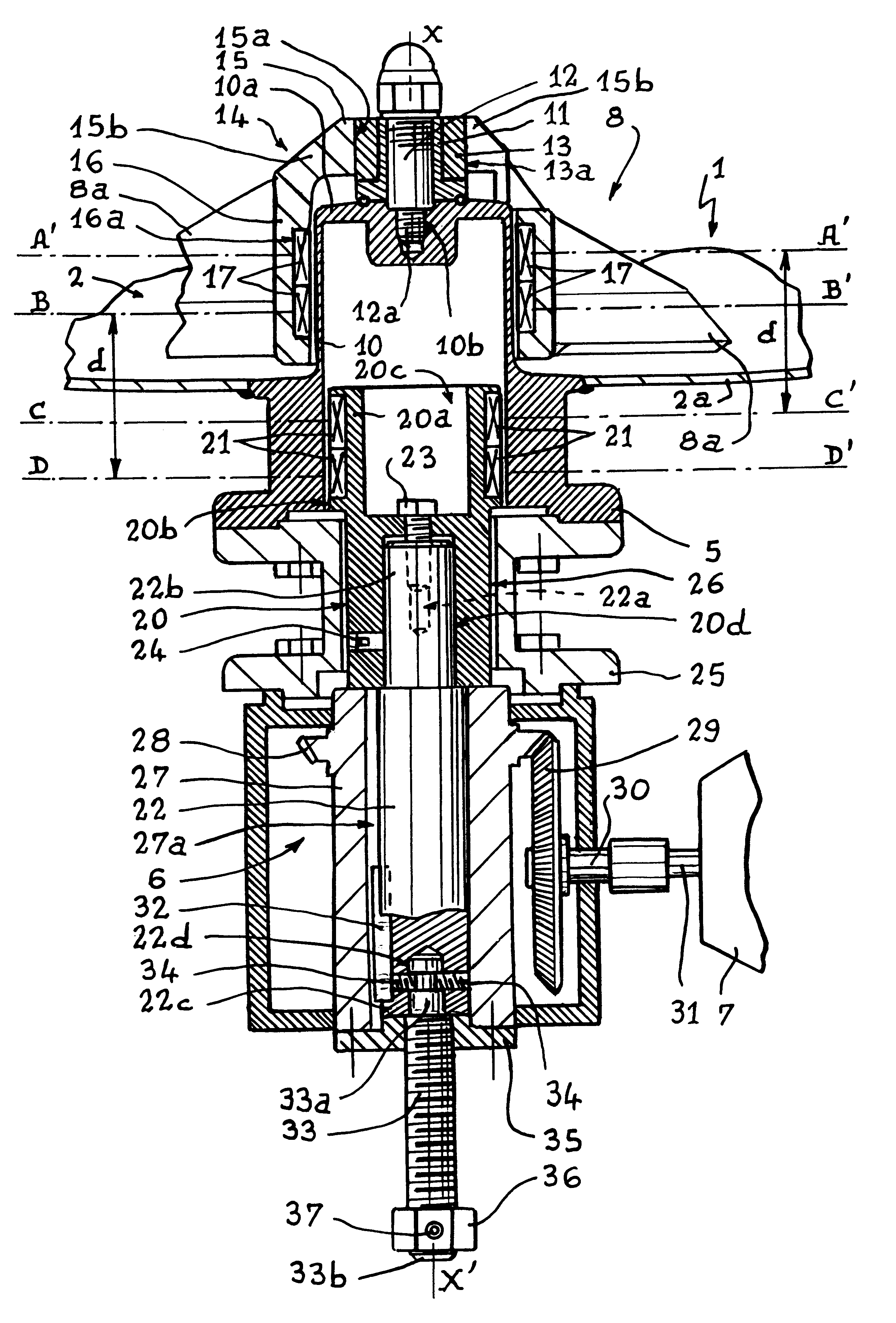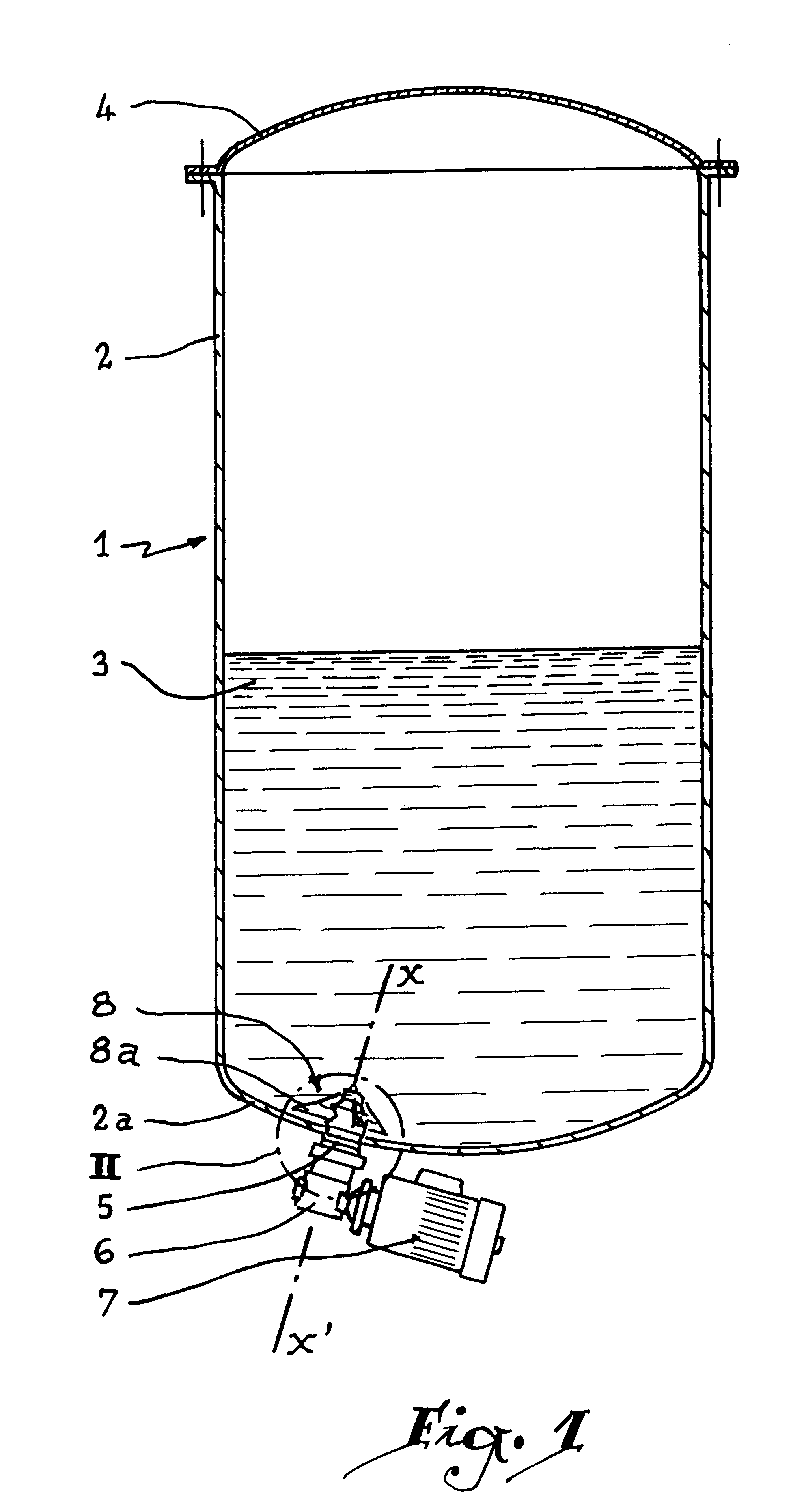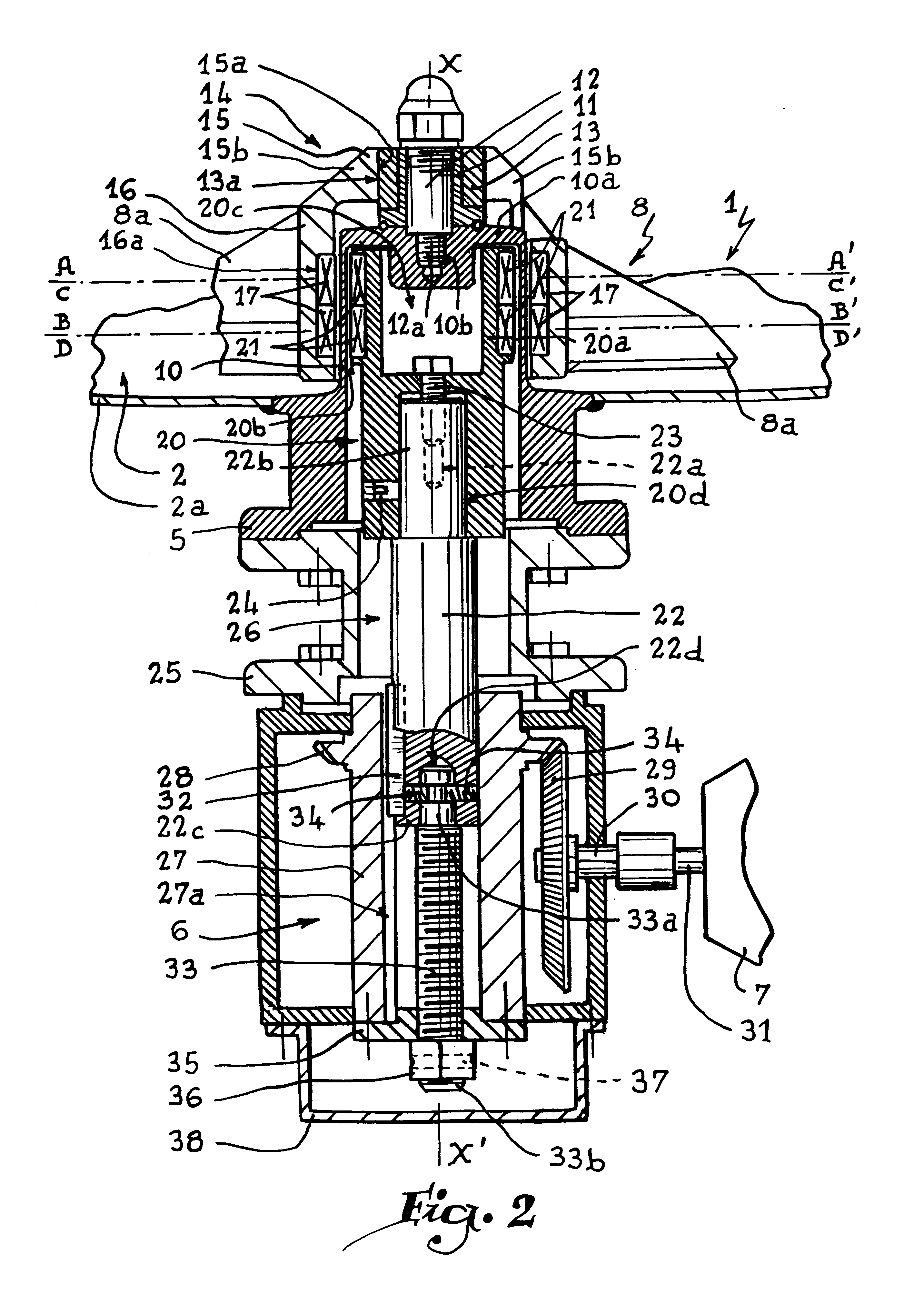Agitator with adjustable magnetic drive coupling
a magnetic drive and agitator technology, applied in the direction of mixers, chemistry apparatus and processes, mixing, etc., can solve the problems of affecting the operation of the operator
- Summary
- Abstract
- Description
- Claims
- Application Information
AI Technical Summary
Benefits of technology
Problems solved by technology
Method used
Image
Examples
Embodiment Construction
Referring now to the drawings, FIG. 1 shows a recipient 1 formed by a tank 2 and containing a mixture 3, while a lid 4 is provided to obturate an upper opening of the tank.
In the bottom wall 2a of the tank 2 is disposed a flange 5 made of a magnetic material supporting a reduction gear 6 and an electric motor 7, located outside the tank 2. A propelling screw 8 is arranged inside the tank 2, in the mixture 3. The rotation of the propelling screw 8 by the motor 7 results in a displacement of its blades 8a, of which two are visible in the Figures, around an axis of rotation X-X', which has the effect of stirring the mixture 3.
The flange 5 forms a blind or hollow sleeve 10 which extends inside the tank 2. A bearing 11 is mounted on the end 10a of the sleeve 10 thanks to a pin 12 whose threaded end 12a is received in a tapping 10b of the end 10a of the sleeve 10. The bearing 11 supports a bush 13 of which the outer surface 13a constitutes a bearing surface. The propelling screw 8 compris...
PUM
 Login to View More
Login to View More Abstract
Description
Claims
Application Information
 Login to View More
Login to View More - Generate Ideas
- Intellectual Property
- Life Sciences
- Materials
- Tech Scout
- Unparalleled Data Quality
- Higher Quality Content
- 60% Fewer Hallucinations
Browse by: Latest US Patents, China's latest patents, Technical Efficacy Thesaurus, Application Domain, Technology Topic, Popular Technical Reports.
© 2025 PatSnap. All rights reserved.Legal|Privacy policy|Modern Slavery Act Transparency Statement|Sitemap|About US| Contact US: help@patsnap.com



